Make heat, puffy home made bao buns with components you have already got in your kitchen! These conventional Chinese language steamed buns are scrumptious folded round savory fillings, and so they’re really easy to make. I’ll even share methods to do it with out a steamer basket!
Stuff these delicate steamed and serve them as a beginning act for all of your favourite Asian recipes. Do this salt and pepper rooster and shrimp lo mein for a tasty dinner that’s higher than takeout.
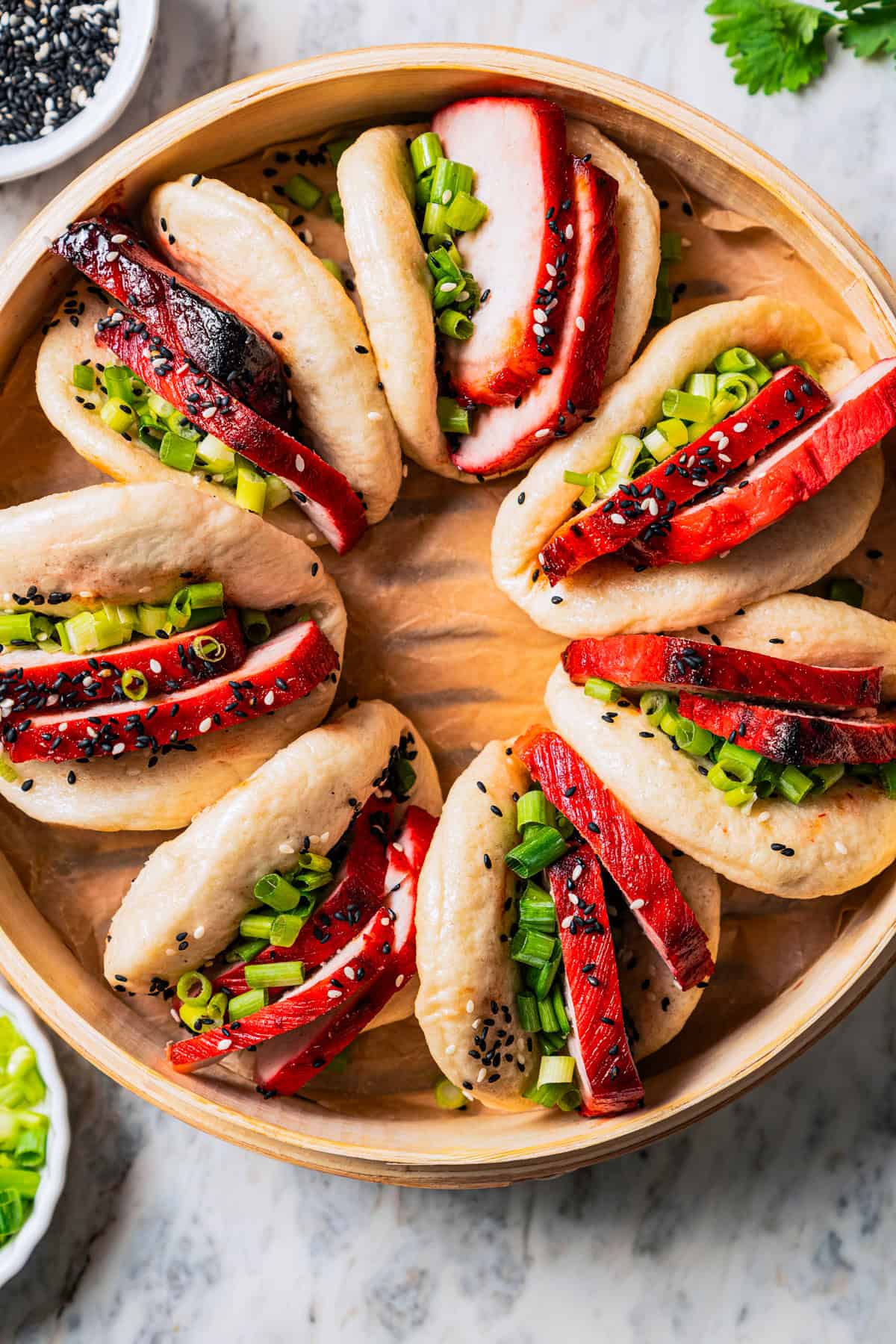
Bao buns (pronounced “bow”, as in “take a bow”) are heat and fluffy steamed buns made out of candy dough wrapped round some form of filling. They’re a Chinese language specialty, although to not be confused with the bao dumpling that goes by the identical identify! I made these puffy steamed bao buns at house not too long ago and I used to be blown away by how genuine they turned out. They got here out of the steamer pillowy delicate, a bit candy, and it was really easy! They held up nice once I stuffed them filled with the savory char siu pork I’d made for the event.
Why This Bao Buns Recipe Works
- Pantry components. I had every little thing I wanted to make home made bao buns already in my kitchen. Likelihood is, you do too! This easy steamed buns recipe wants easy components like flour, sugar, and yeast.
- Fast. Like different yeasted dough recipes, there’s a little bit of hands-free rising time concerned in making bao buns. However the hands-on steps are fast and comparatively straightforward, even should you’re new to working with home made dough.
- Completely puffed. I’ll present you ways straightforward it’s to steam these bao buns, with or with out a bamboo steamer basket. In the event you observe the recipe simply because it’s written, you’ll find yourself with massive, puffed, excellent bao that’s prepared for stuffing in minutes.

Components You’ll Want
- Sugar – I like to recommend common granulated sugar (or mild brown sugar).
- Yeast – You’ll want energetic dry yeast. Test the dates in your yeast packets to ensure it’s contemporary and never expired.
- Water and Milk – Each ought to be barely warmed up, however no hotter than 110ºF.
- Flour – All-purpose works finest right here. I haven’t examined this recipe with gluten-free flour but.
- Baking Powder – To not be confused with baking soda. They aren’t the identical! Just like the yeast, ensure you’re utilizing contemporary baking powder.
- Oil – Canola oil, avocado oil, or one other neutral-flavored vegetable oil.
The best way to Make Steamed Bao Buns
This bao recipe is tremendous approachable, even should you’re simply getting the dangle of working with yeast. Under is a step-by-step overview of what you’ll be able to count on when making bao buns from scratch. You’ll discover the printable directions within the recipe card.
Make the Dough
First, collect your components (see above) and make a fast, stiff dough:
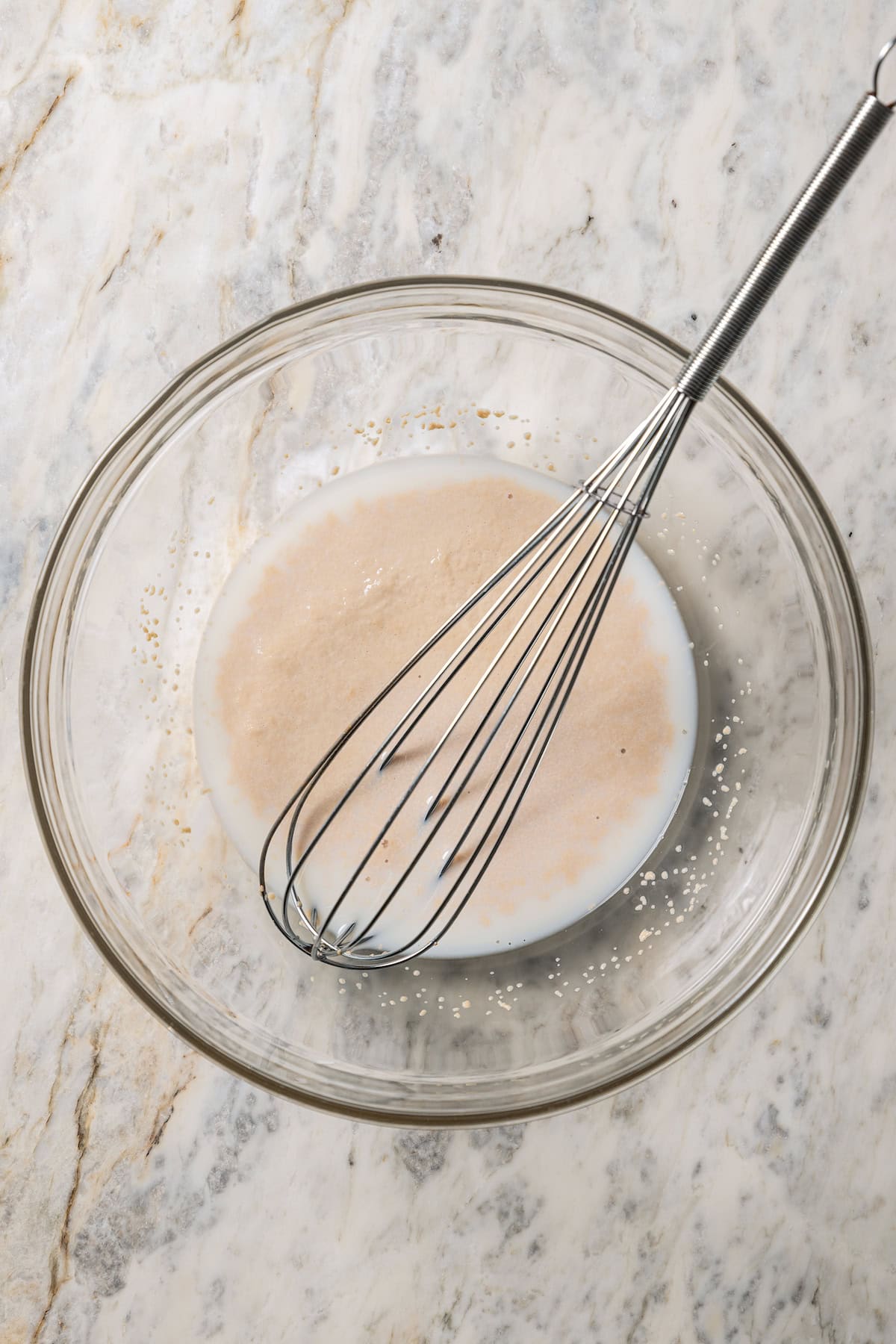
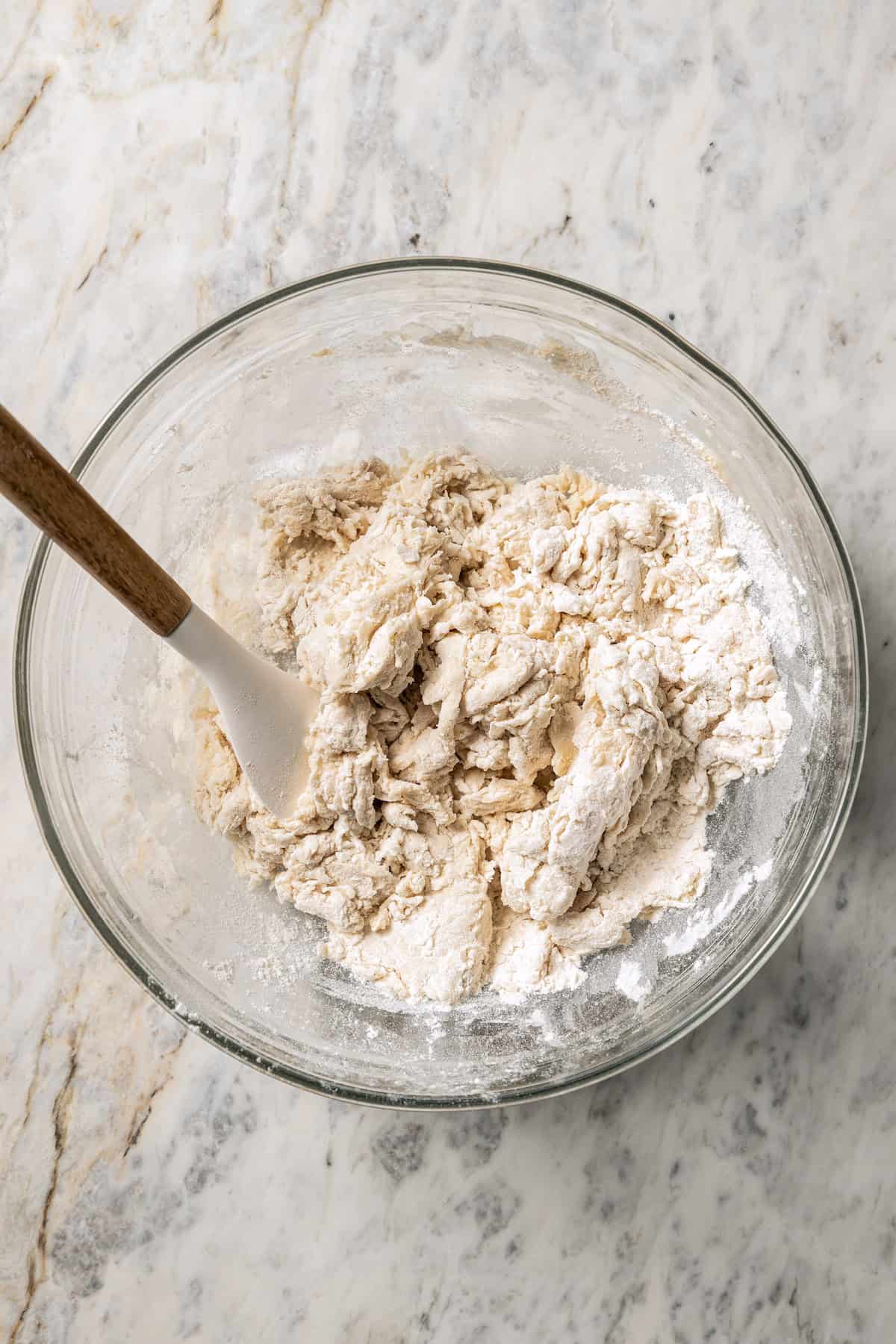
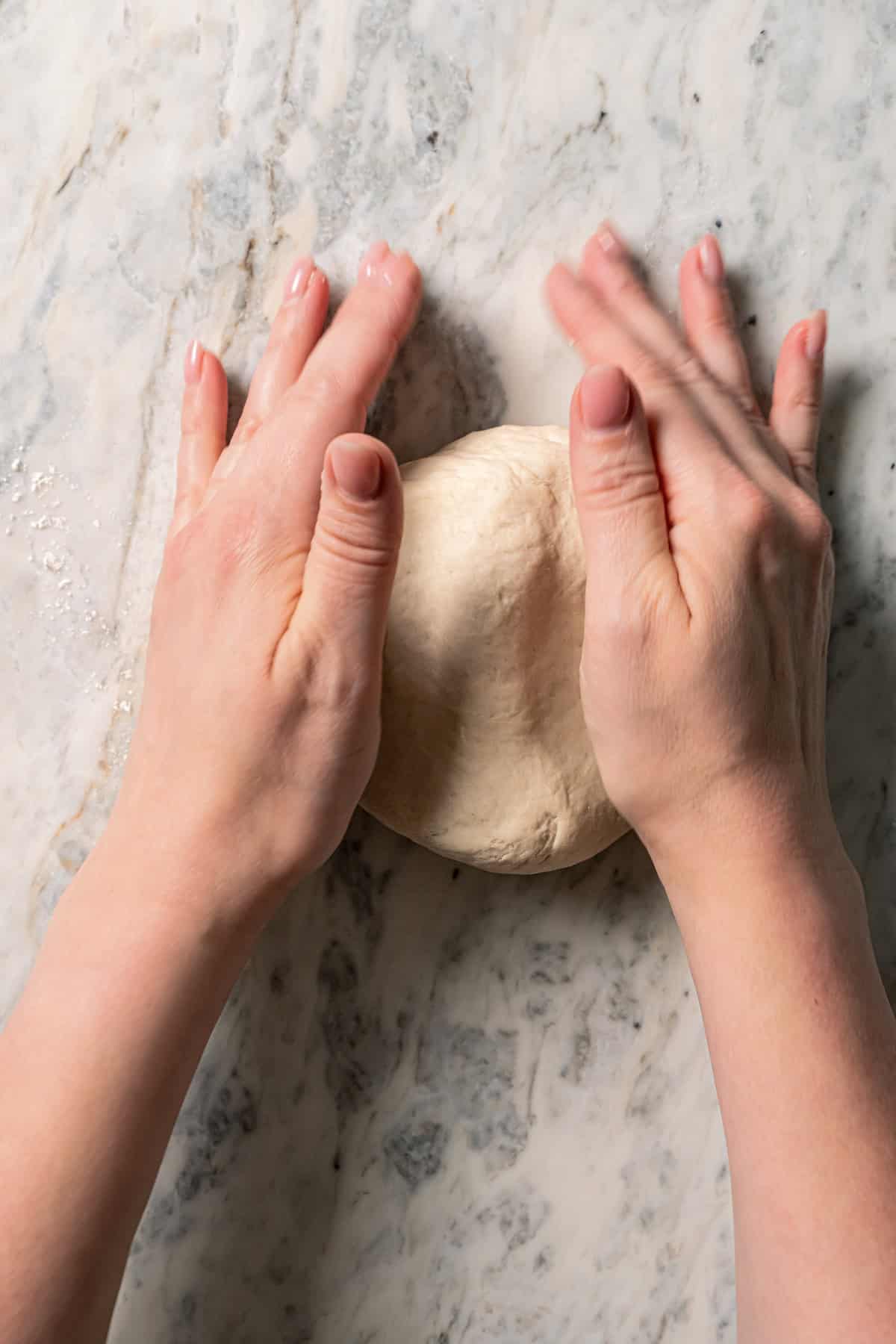
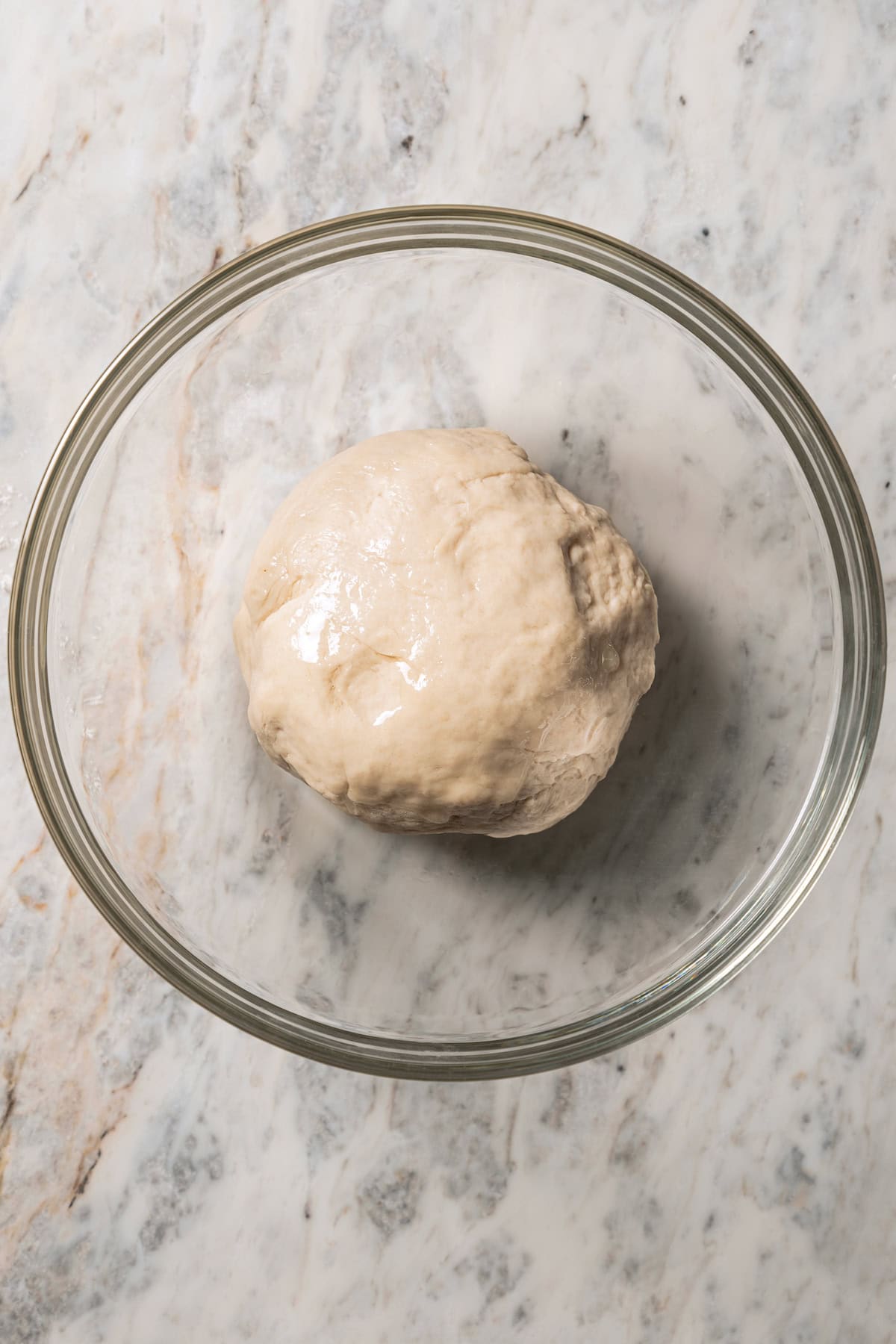
- Make the dough. Activate the yeast with sugar, heat milk, and heat water. As soon as that’s foaming, you’ll add the dry components and blend to type the dough. Afterward, knead the dough on a floured floor till it’s clean. It ought to spring again whenever you poke it.
- Let it rise. Place the dough ball into an oiled bowl. Cowl and go away the dough someplace heat to rise for 45-60 minutes.
Form the Bao
As soon as your dough is prepared, it’s time to roll and form your bao buns. Quite than portioning the dough and rolling it out individually, my straightforward “hack” is to roll all of it out directly and reduce out the dough into rounds. Simple!

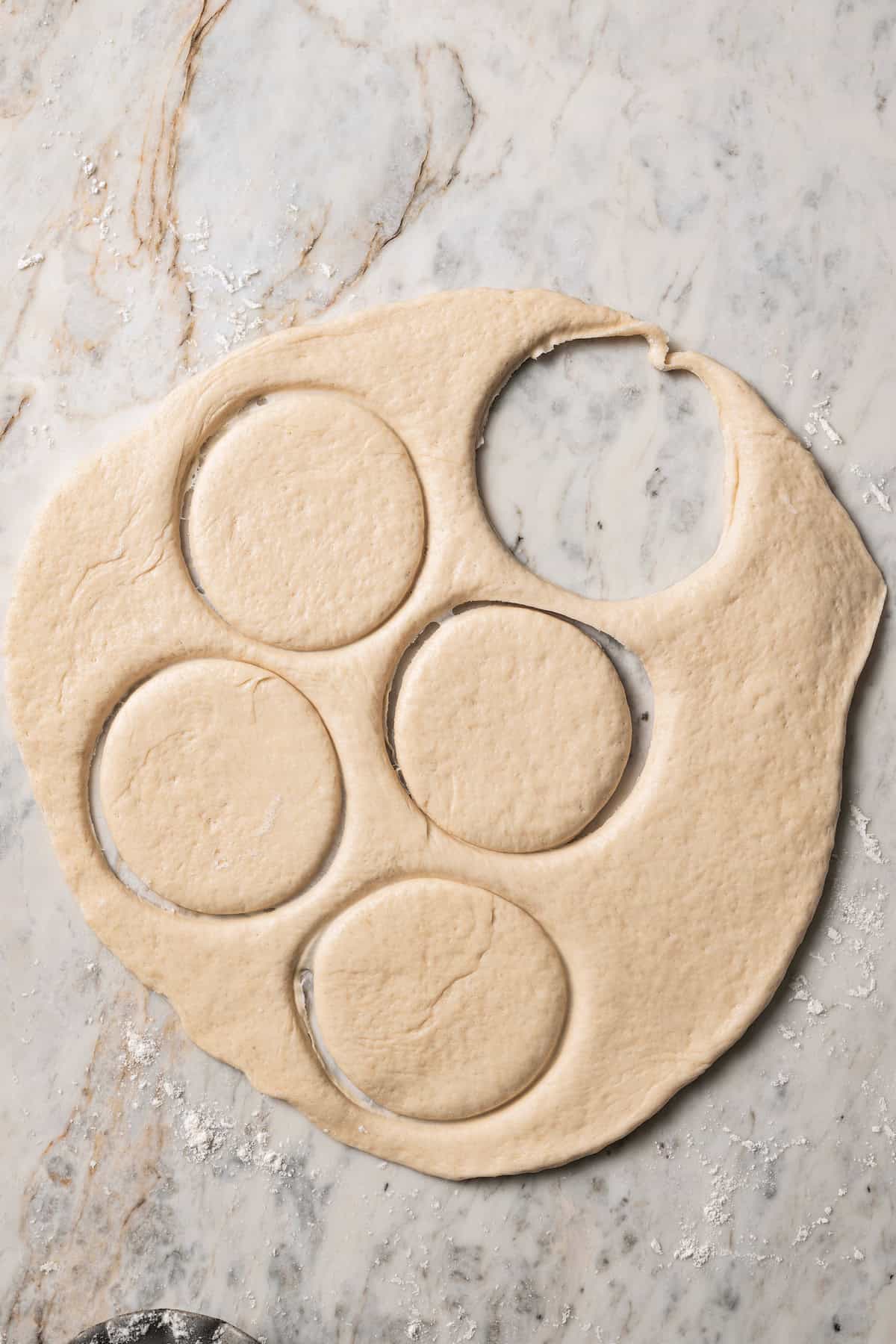
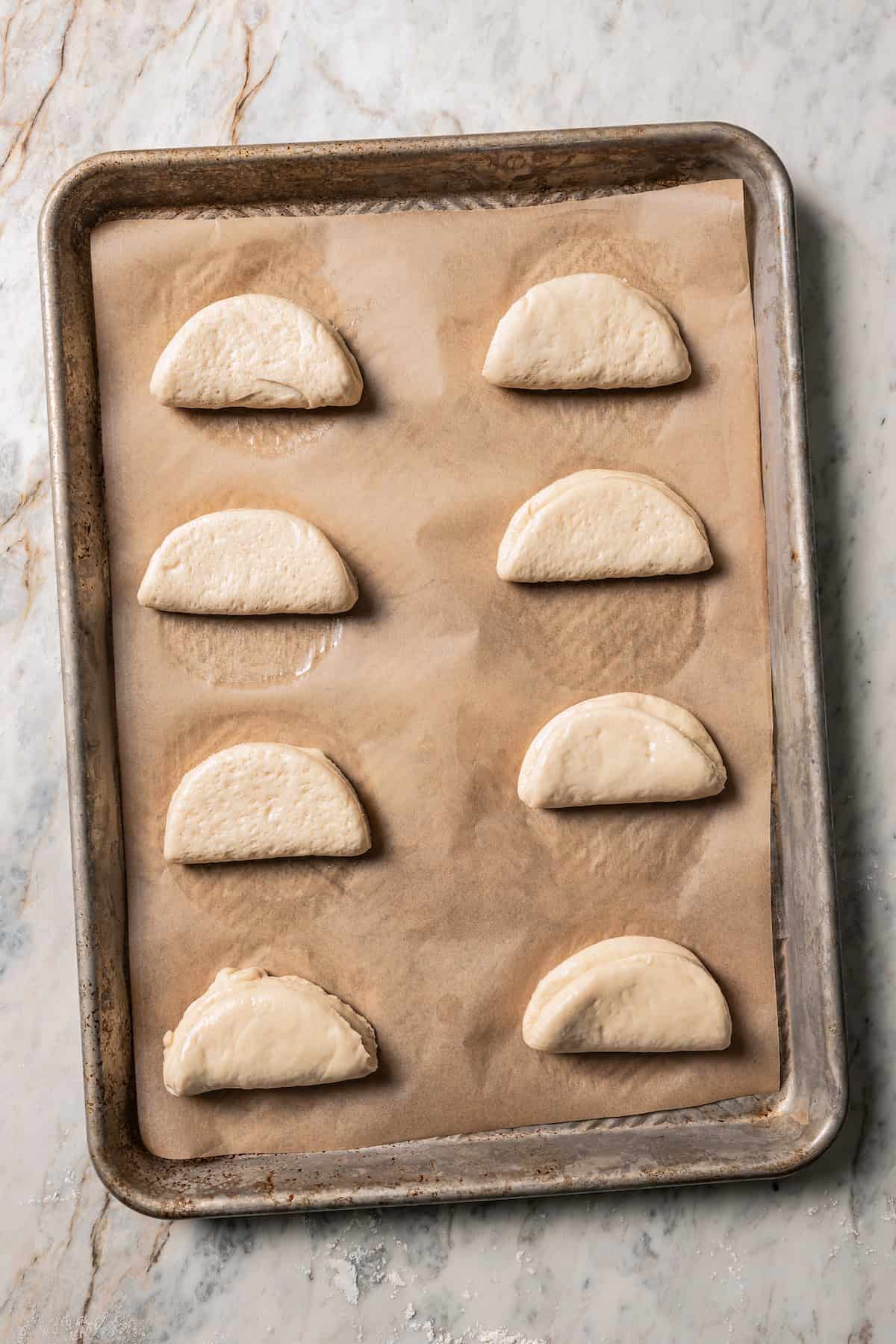
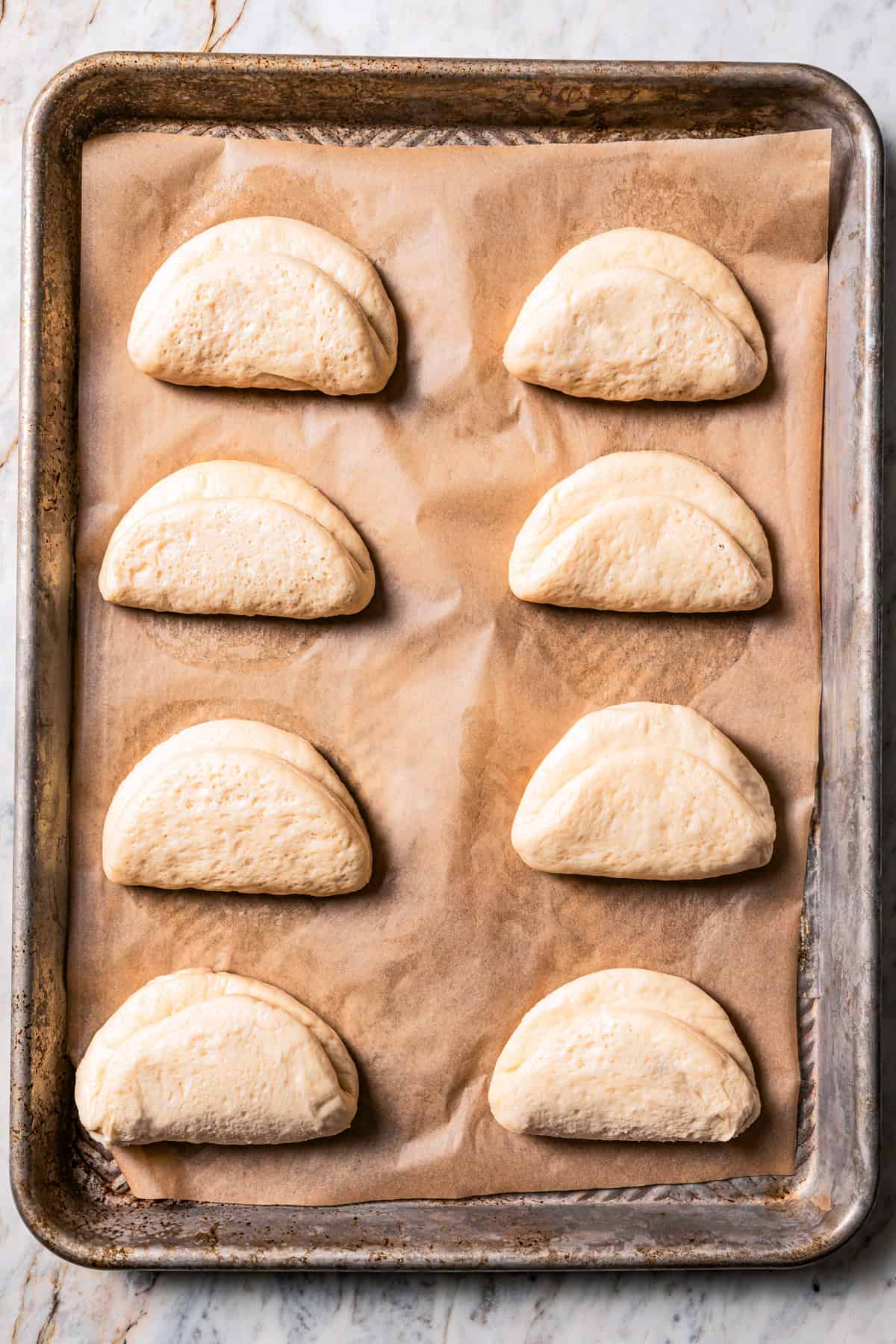
- Roll out and reduce the dough. Now, roll the dough flat. Use one thing spherical, like a glass or a biscuit cutter, to chop out rounds of dough, transferring them to a lined baking sheet.
- Fold the buns. Brush every spherical with oil and fold it right into a half-moon. Your bao is beginning to take form! Afterward, cowl the folded dough and let it relaxation for one more hour.
Steam the Bao Buns
Final however not least, it’s time to get these bao buns to the sauna– I imply, steamer!

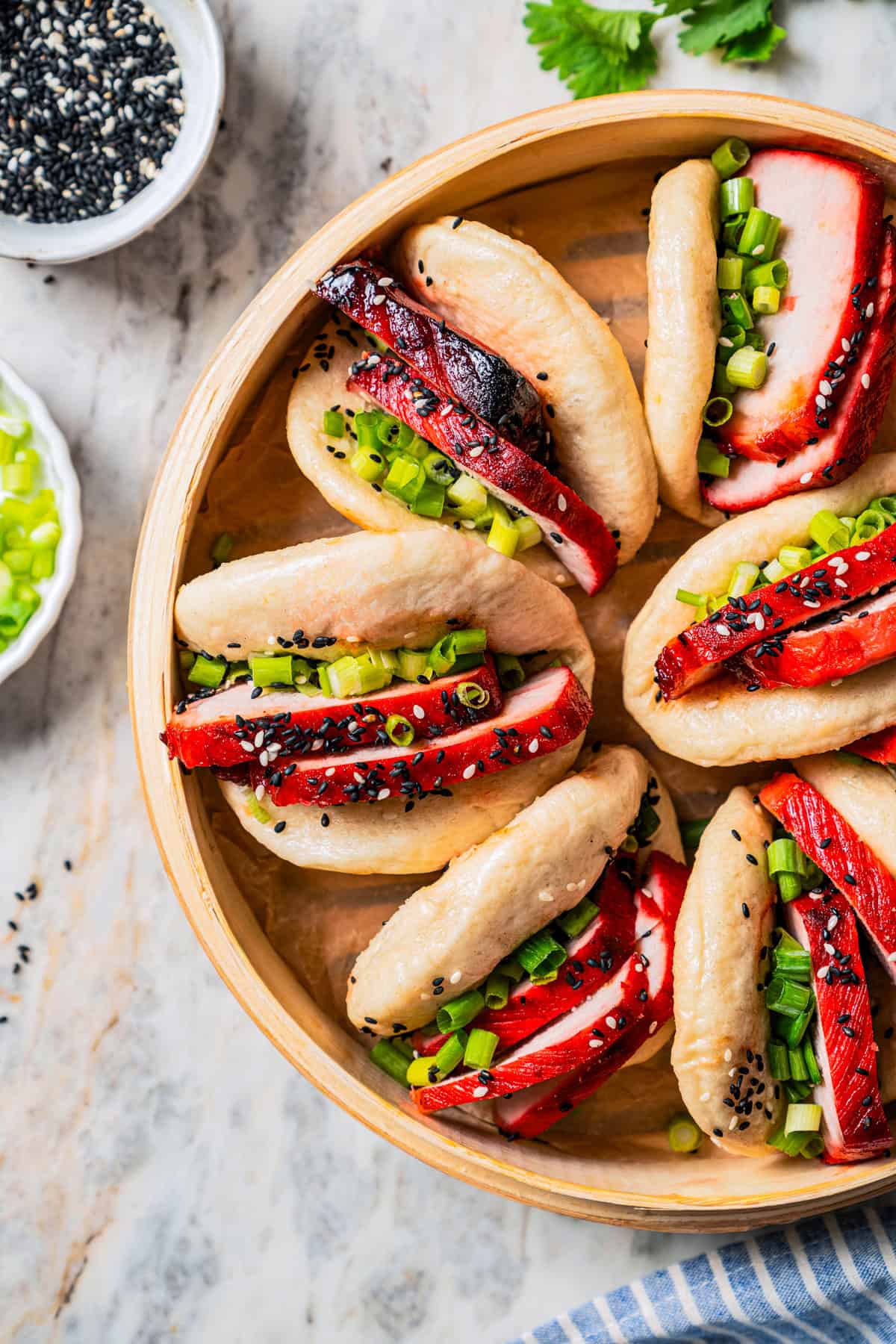
- Steam. Get water boiling beneath a steamer basket on the stovetop. Place the buns inside, cowl the basket, and steam for 10 minutes. I normally have to do that in batches.
- Serve! Fill your freshly steamed bao buns with char siu pork or your alternative of savory filling, garnish with inexperienced onions and sesame seeds, and luxuriate in. See beneath for tasty serving concepts.
What If I Don’t Have a Steamer Basket?
Earlier than I purchased my bamboo steamer basket, I used to McGyver a steamer utilizing a lidded pot, a dinner plate, and the trivet from my On the spot Pot (you too can use a spherical wire rack). It labored completely! Right here’s methods to steam with out a steamer basket:
- Fill a big lidded pot or Dutch oven with about ½” of water, and place the trivet/rack into the pot. Make certain it doesn’t contact the water. Then, grease a heat-proof plate and place it over the rack.
- Convey the water to a boil. Switch the bao buns to the plate contained in the pot, shut the lid, and steam.
These days, I like my steamer basket and may’t suggest it sufficient, particularly should you’re a fan of Asian cooking! I exploit it to steam every little thing from bao buns to shrimp shumai and dumplings.
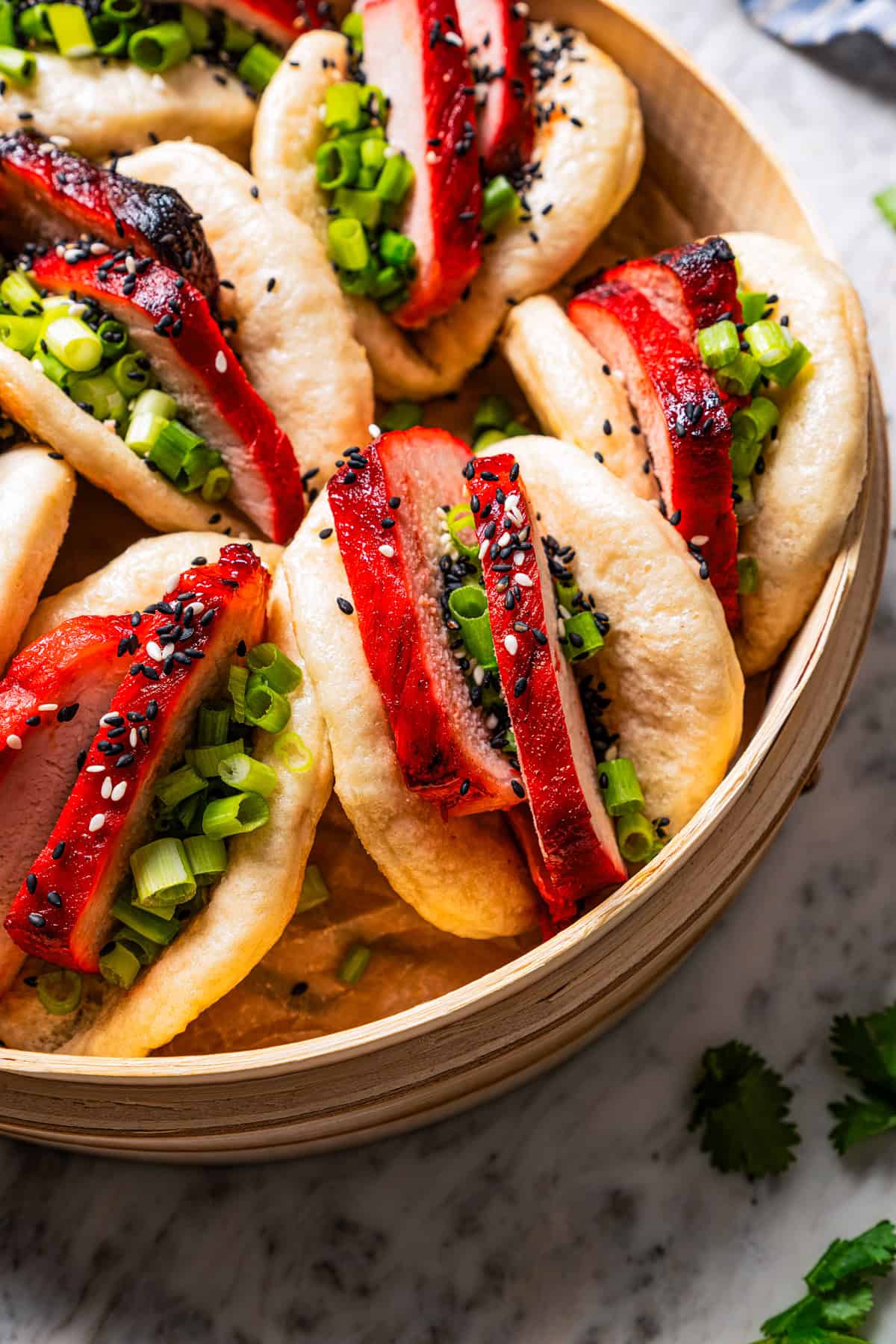
Recipe Ideas
- The activated yeast ought to begin to foam after 5-10 minutes. If it doesn’t, your yeast could also be expired, or the temperature of the milk or water is perhaps too sizzling (each shouldn’t be hotter than 110ºF). If this occurs, you’ll want to start out over once more with contemporary yeast.
- If the bao dough feels dry, add a spoonful of water at a time to assist it come collectively. You wish to find yourself with a clean, stiff dough that springs again should you press it together with your finger.
- Steam in batches. Watch out to not overcrowd the steamer basket, maintaining in thoughts that the bao buns will puff up within the warmth. You’ll probably have to steam the buns in batches. My steamer matches 4 at a time.
- Serve instantly. These bao buns are finest served contemporary from the steamer! When you have extras, although, they retailer and freeze nicely. See beneath for storage suggestions.
Filling Concepts
I stuff my bao buns with fillings like juicy Chinese language char siu pork and Korean beef bulgogi or rooster bulgogi. These pan-fried oyster mushrooms make a scrumptious vegetarian bao, too. Construct your personal bao buns with a few of these scrumptious filling concepts:
- Protein. Beef, pork, rooster, tofu, or seafood, like shrimp or tuna steak.
- Veggies. Shredded lettuce, cabbage, or julienne greens like cucumbers, carrots, and bell peppers. Pickled greens, cabbage slaw, and kimchi are additionally good choices.
- Sauces. Sriracha, chili oil, soy sauce, or borrow the spicy peanut dipping sauce from my vegetable spring rolls recipe.
- Garnishes. Chopped cilantro, basil, inexperienced onions, sesame seeds, chili flakes, and crushed peanuts.
Serving Recommendations
Selfmade bao buns are nice as a aspect dish or starter. I like serving them with Asian cucumber salad, spicy firecracker shrimp, or crispy crab rangoon. You too can spherical out a meal with a stir fry, like slurpy home made ramen noodles or fast Mongolian rooster. I additionally love this straightforward shrimp fried rice! For a vegetable choice, attempt sesame snap peas or bok choy, or these crunchy cucumber sushi rolls.
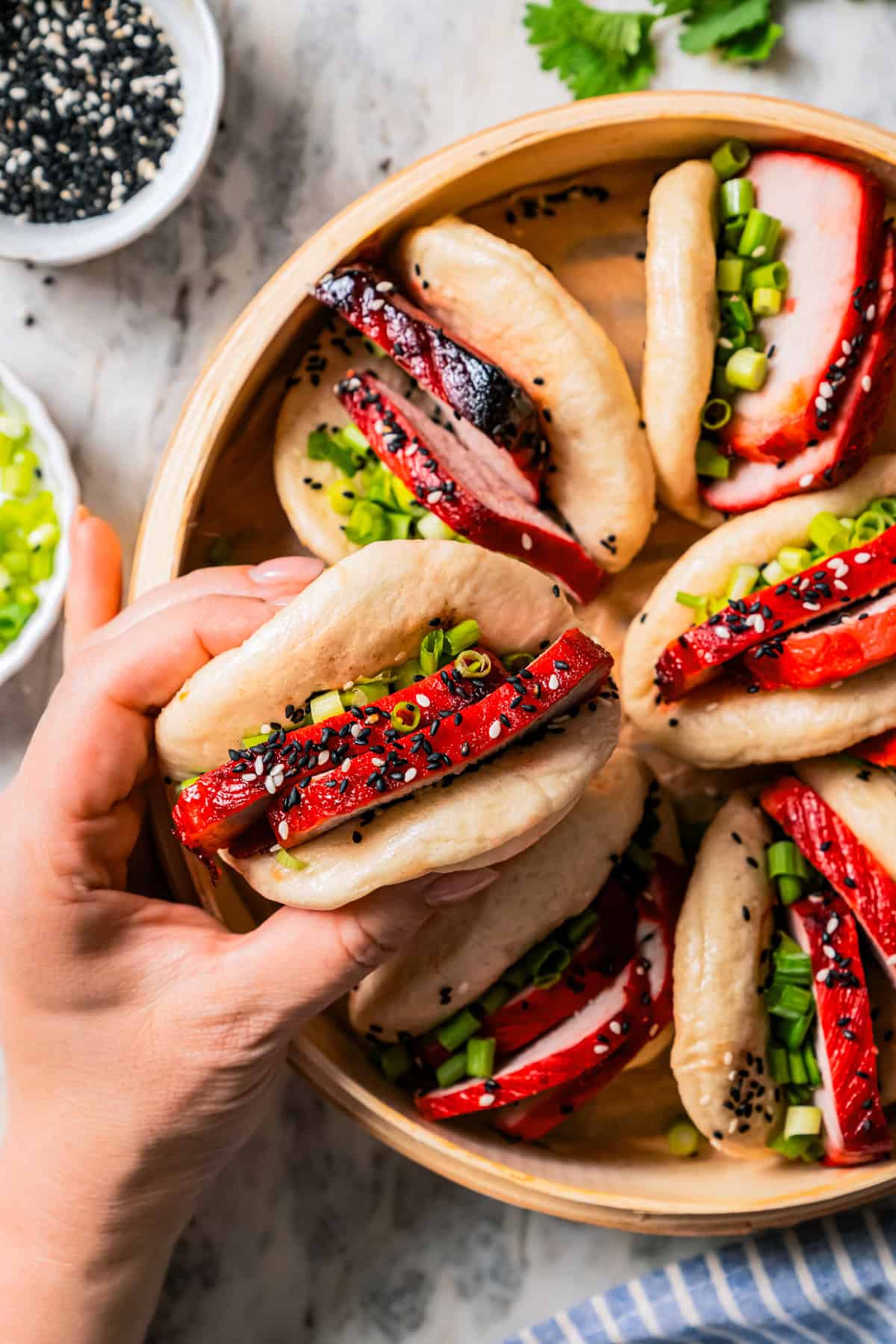
How Do You Retailer Bao Buns?
- Refrigerate. Retailer leftover steamed and cooled bao buns in an hermetic container or resealable bag. Preserve them within the fridge and reheat them inside 3-4 days.
- Reheat. One of the simplest ways to reheat bao buns is to cowl and steam them for about 5-10 minutes till they’re puffed and springy once more.
- Freeze. Freeze the steamed bao buns for as much as 2 months and thaw them within the fridge earlier than reheating. In any other case, you’ll be able to steam them from frozen, including an additional minute or two to the steaming time.
Extra Asian-Impressed Recipes
Pin this now to seek out it later
-
Activate the yeast. In a big mixing bowl, whisk collectively the sugar, yeast, water, and milk. Let the combination sit for 5-10 minutes or till foam seems on the high.
-
Add the dry components. Combine the flour, baking soda, and salt into the yeast combination. Combine till a ball of dough kinds. Add extra water if the dough feels dry.
-
Knead. Switch the dough to a flippantly floured floor and knead till clean and elastic – it ought to spring again at you when poked.
-
Rise. Brush a bowl with vegetable oil and place the dough ball inside. Cowl and let rise in a heat place for 45 minutes to 1 hour.
-
Lower. On a flippantly floured floor, roll the dough to ~ ¼” thickness. Use a glass or a cookie cutter to chop the dough into 3 ½” rounds. Switch the rounds to a baking sheet lined with parchment paper. Brush the rounds with oil and fold them in half to create half-moons. Press down on every half-moon flippantly in order that it stays folded. Cowl with plastic wrap and let relaxation for 1 hour at room temperature.
-
Steam the buns. Convey 1-2 inches of water to a boil in a pan. Place a steamer basket over it. Switch the buns to the steamer, being cautious to not crowd the basket (you’ll probably need to steam in batches). Cowl the steamer and steam the buns for 10 minutes.
-
Assemble. Stuff the bao buns with char siu pork (or your alternative of filling), inexperienced onions, and sesame seeds, then serve.
- In the event you don’t have a steamer basket, add ½ inch of water to a big lidded pot and place a trivet (or rack) inside, making certain it doesn’t contact the water. Grease a heat-proof plate and set it on the trivet. Convey the water to a boil, place the bao buns on the plate, cowl the pot with a lid, and steam.
Energy: 97kcal | Carbohydrates: 20g | Protein: 3g | Fats: 1g | Saturated Fats: 0.2g | Polyunsaturated Fats: 0.1g | Monounsaturated Fats: 0.1g | Ldl cholesterol: 1mg | Sodium: 4mg | Potassium: 65mg | Fiber: 1g | Sugar: 2g | Vitamin A: 12IU | Vitamin C: 0.001mg | Calcium: 24mg | Iron: 1mg
Dietary information is an estimate and supplied as courtesy. Values could range in keeping with the components and instruments used. Please use your most popular dietary calculator for extra detailed information.

